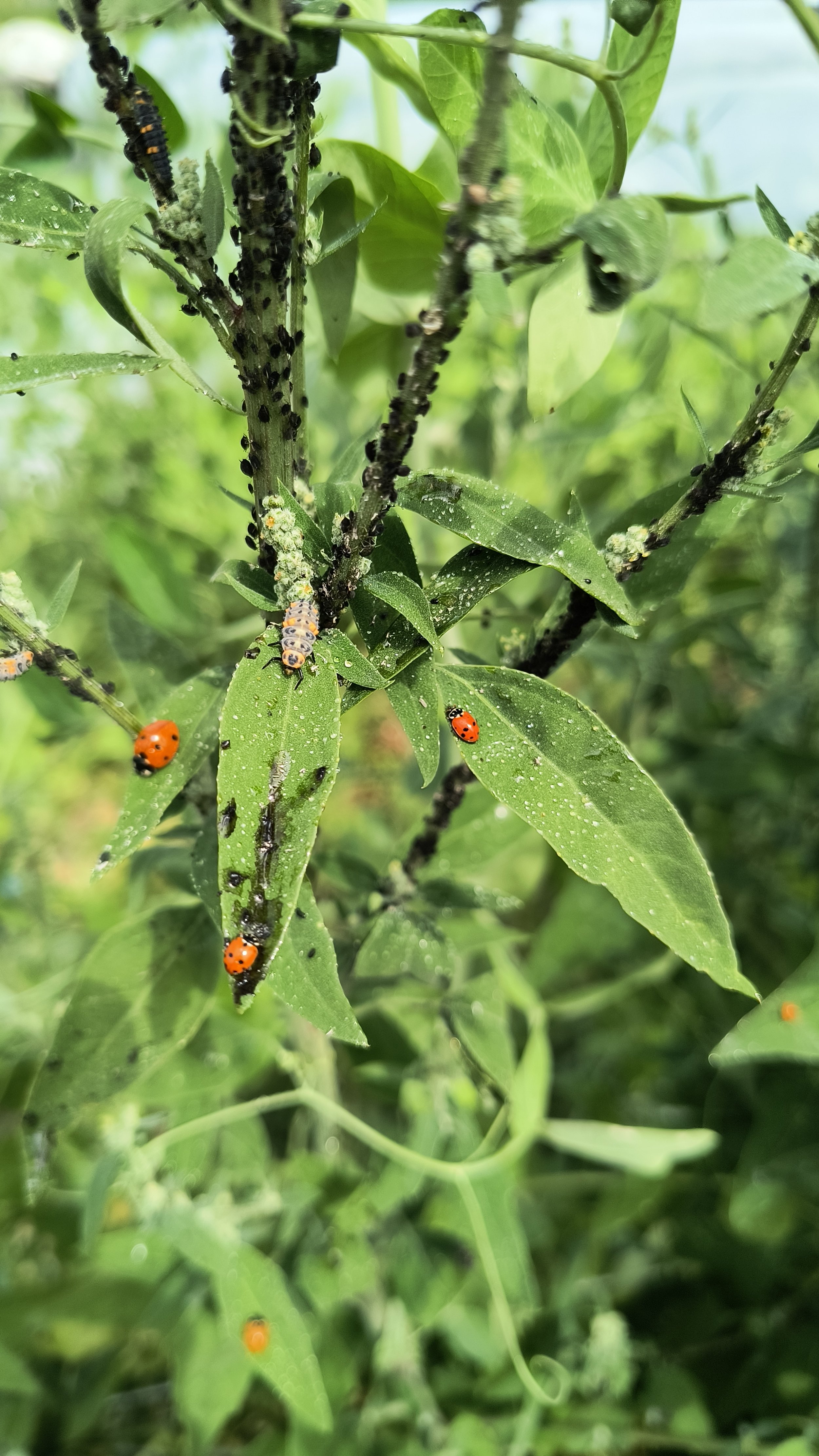Why we don't Spray
Above you will find some black aphids, these black aphids are sucking the sap from wild lambs quarters. The aphids excrete a sugary substance knows as honeydew which ants love so much, that they actually tend to the aphids like milk cows. You may see a few red ants working (I don’t see any in the photo but they were there), but not as hard as the lady bugs and their larvae. Letting nature run it’s course provides a balance, there is an excess in aphids which leads to an excess in lady bugs. We will weed out this lambs quarters and rid the field of these aphids and the lady bugs can go work elsewhere.
Certain weeds make good “trap crops”. Aphids love lambs quarters, while potato beetles love black nightshade.
Above we see a Soldier Beetle. These soft bodied insects are great pollinators that also eat aphids and other invertebrates. Pesticides often specifically target soft bodied insects, why would you want to also destroy these beautiful and hard working friends?
Fungi communicate with both the soil and surrounding plants through the mycelium web in the soil. Chemical sprays can accumulate in the soils disrupting these symbiotic relationships.
Here you see a gray tree frog hanging out on the insect netting like a hammock, enjoying the shade cloth overhead. Probably also enjoying the overhead irrigation.
Here is a wolf spider mother carrying her egg sac. These spiders are great because they enjoy eggs of other problem insects.
We set aside some space, and mow infrequently in some spots (definitely for pollinators not because we’re too busy), to allow from some weeds, which are really just wildflowers, to reach their flowering stage for the pollinators to enjoy. Here is a patch of milkweed that we have been enjoying for many years. The monarchs appreciate it too.
You can’t get every tomato horn worm or you won’t leave any food for the parasitic wasps. Allowing these wasps to find a horn worm host will allow for the population of wasps to grow and protect the garden for future seasons. Here you can see the egg sacs of the wasp on the back of the horn worm.
You never know what you will find!
A wood turtle! I love finding turtles.
Yes, we love most butterflies. Just not the whites that love the brassicas.
A red backed salamander. A great indication of a healthy, non-toxic ecosystem.
Babeh snapping turtle.
Yes the eggs did hatch and birdies were raised up.
And all we have to do is cover almost every crop. Here you see us switching out heavy frost protecting covers (on the right) for insect netting to allow the cabbages and broccoli and cauliflower to breath and not get eaten up by little whites and soon to come harlequin bugs.














